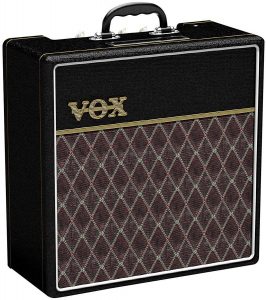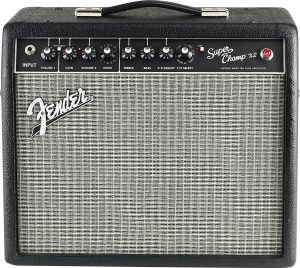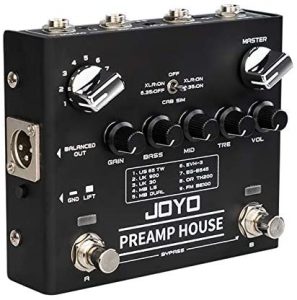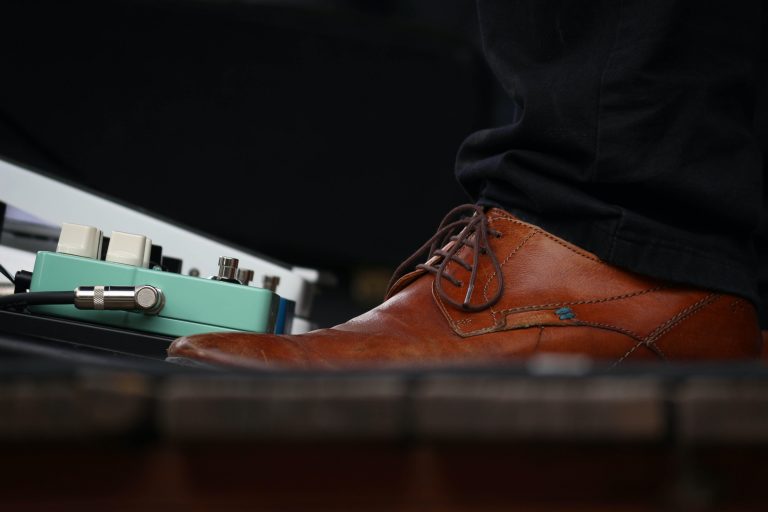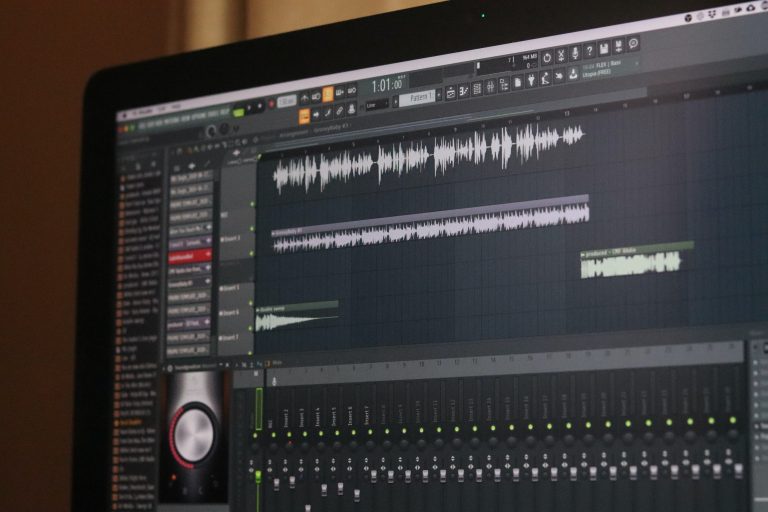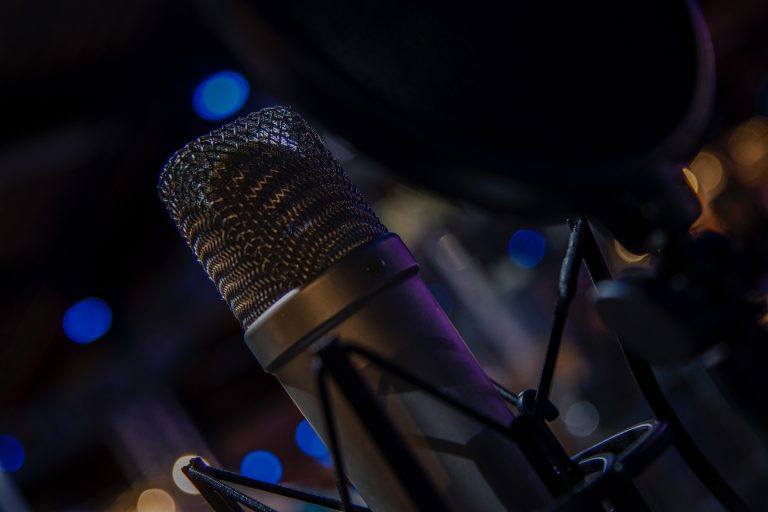Best Amplifiers for Worship Under $500
Tone may be in the fingers, but a large majority of the overall sound of your guitar rig comes from the amplifier. No, not the pedals. In fact, I might argue that your choice of amp actually has more of an effect on your tone than your guitar. If you’re looking for the best amplifier for your worship guitar rig on a budget, look no further. In this series of articles, I’ve been doing a deep dive on helping you put together a great-sounding worship guitar setup without breaking the bank too hard. Not only are we talking about the gear itself, but we’re also covering some of the groundwork for what the sound we’re going for is, and how to achieve it.
In our last article, we looked at some great affordable electric guitars that don’t cost a whole lot but still deliver some great, clear tones. We talked about the pickup choices In this post, we’re looking at amplifiers, and even some alternatives to using a traditional amp. Our target for our amplifier is $500, just like for our guitar. At the end of the series, we should be able to put together a totally viable and versatile worship rig for $1500 or less.
Boutique Amps are Cool But…
In your search for your amplifier for your worship guitar rig, you’ve probably come across some of the lesser-known boutique builders out there. You quickly realize that the realm of guitar amplifiers has just as many outlandishly expensive and customizable options as the world of boutique guitars. You might even see these amps behind some of your favorite worship guitar players. These amps are all awesome and full of features that may or may not be desirable, but they sure would be nice, right?
But the interesting thing is, if you read about how a lot of these companies came to be, for the most part these amps have their roots in some of the classic amplifiers that have been around for decades, like the Vox AC series, or the amplifiers made by Fender, like the classic Deluxe Reverb for example. And it’s in those roots that we’ll be looking for our analog amplifying options. Why? Because the nice-to-haves are at the end of the day just, well, nice to have. It’s easy to get so wrapped up in the research and have our eyes gleaming with desire over toys that we forget why we’re doing what we do as worship guitarists, but I digress.

What Kind of Amp Should You Get?
For those of you just starting out on your guitar journey, there are really three big classes of guitar amplifiers out there in the market today: The tube amplifier, the analog solid-state amplifier, and the digital or modeling amplifier. For worship guitar, the combo tube amp is and has been the classic approach, but as technology in recent years has developed, the modeling route is becoming more and more accepted and popular. What is a “combo” tube amp? It’s both the amplifier, or what’s commonly referred to as the “head”, and the speaker all in one enclosure. Amplifiers also come in modular head and cabinet (speaker enclosure) options. These arrangements are obviously more customizable but tend to get more expensive, and we start to have to worry ourselves with matching impedances and power ratings, which might go well beyond the scope of what you’re willing to do if you’re just starting out. Combo amps do all that for you, and manufacturers do a pretty excellent job overall of pairing great speakers with their amps, so I recommend going that route if you’re looking into getting a physical amp.
We guitarists can often be a stubborn bunch, and for that reason a lot of players in the worship genre are very concerned with achieving a very specific sound. Generally, that desirable sound in contemporary worship is either a completely clean guitar tone, or one gained up just enough to break up a little bit. The natural breakup of a guitar signal run into a tube amplifier tends to be much more pleasing to the ear in comparison to the harsher sound of drive that comes from transistor-based amplification in a solid-state amp, so for our traditional amp options, we’ll be looking at tube amps.
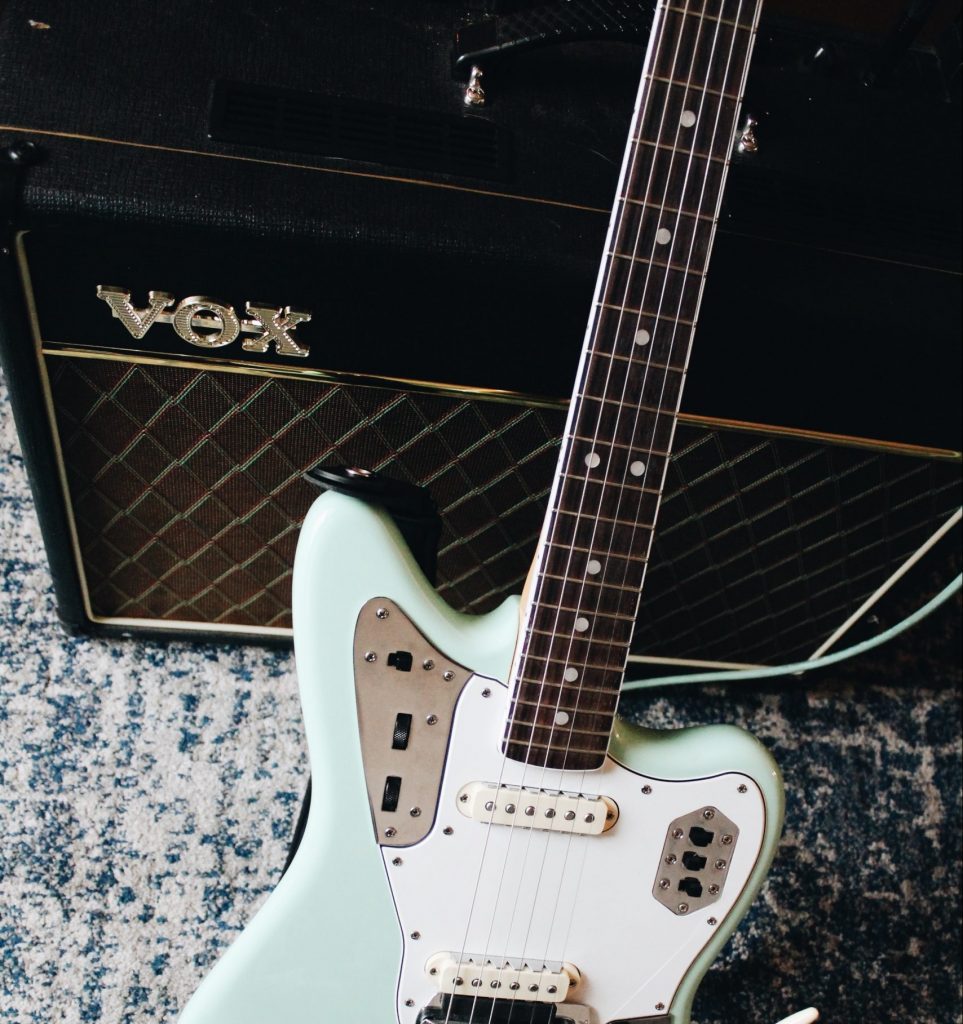
Outside of the traditional amp, there are also modeling amps, or modelers. They use sophisticated methods to emulate the actual sounds of specific speakers and microphones. I am by no means an expert on this tech, but Fractal Audio Systems (famous for the Fractal Axe-FX) does a fantastic job giving a decent breakdown of how the technology works right here if you’re interested in doing some extra reading. The technology and capability of digital signal processors, or DSPs as you might hear them called, has afforded us some really great emulation of some very sought-after amps. The big advantage to using a modeling amp like these is that they give you access to relatively to extremely faithful reproductions of the tonal characteristics of multiple amplifiers, all in one box. In some cases, like the aforementioned Axe-FX, the Line 6 Helix, and the Kemper Profiler, this even includes effects as well as the amplifiers. In contrast to the previous statement I made about guitarists being stubborn, a lot of worship guitarists have been opting for amp modelers in recent years. While many of these devices do have steep learning curves, entire communities have developed where musicians share their tones with one another to get perfect reproductions of the guitar sounds and effects used on the worship artists’ actual recordings, provided of course that that guitarist is also using the same platform.
So to answer the “What should you get?” question we asked a couple paragraphs ago, the two most popular routes worship guitarists are taking at this point in time are either traditional tube amps, or amp modelers, so that’s what we’ll be recommending you consider picking up. In the tube amp realm, most of the big name amps out there that the pros are using are pretty loud, even considering their relatively low power ratings of 15, 22, or 30 watts. If you’re not in a big church and need some lower stage volume, our budget for our amp actually puts us right in the sweet spot for a great-sounding amp that isn’t awfully loud. The amps on our list actually work great in a larger setting, too. I’m including the amp I use every Sunday on this list and you might be surprised at what I’m running at my church of roughly 4000!
Amp modelers can exist entirely free of cabinets at all, so they can be as loud or quiet as the stage environment will allow, which can be an advantage. Additionally, some of the more compact ones like the two on our list are so portable you can put them either right on your pedalboard or in your gig bag. If portability, versatility, and convenience are important to you, an amp modeler might be an excellent choice for you.
The Vox AC Series
If you’re after a tube amplifier that will give you access to that worship guitar sound (you know the one), look no further than the classic Vox AC series. The AC15 and AC30 are both industry standard amps, and for good reason. Unlike their American cousins across the pond, these amps don’t use negative feedback, which allows them to have a more aggressive-sounding midrange response and a more sensitive amplification curve as you increase or decrease in volume. By introducing negative feedback into their amplifiers, Fender achieved an amplifier that stays clean longer and behaves in a more linear way throughout the frequencies it’s amplifying, which offers a much more precise, almost surgical sound. Depending on your tastes one might be more desirable than the other to you, but most guitarists I know that are using amps opt for the Vox, especially when they’re lead players that need to cut through in a busy mix. In addition, in their power section, the Vox amps use EL84 power tubes, which break up quite a bit more easily than the 6V6 tubes you might find powering a typical Fender amp. This gives the Vox amp player easier access to that tube overdriven warmth.
You may have noticed that the two amps we mentioned above actually fall outside our price range, but fear not! If you remember, I mentioned that these amps are pretty loud, and if you’re in a smaller to medium sized church, or if you have an audio engineer that really likes to manage and minimize stage volume, then Vox makes two great options in lower wattages. These amps still use the same circuitry as their bigger brothers, but come in at 4 and 10 watts, which is much friendlier for stage volume. The added bonus to this is you can get to that buttery tube breakup without blasting your own ears out, too. Just below here are links to each amplifier.
The Fender Super Champ
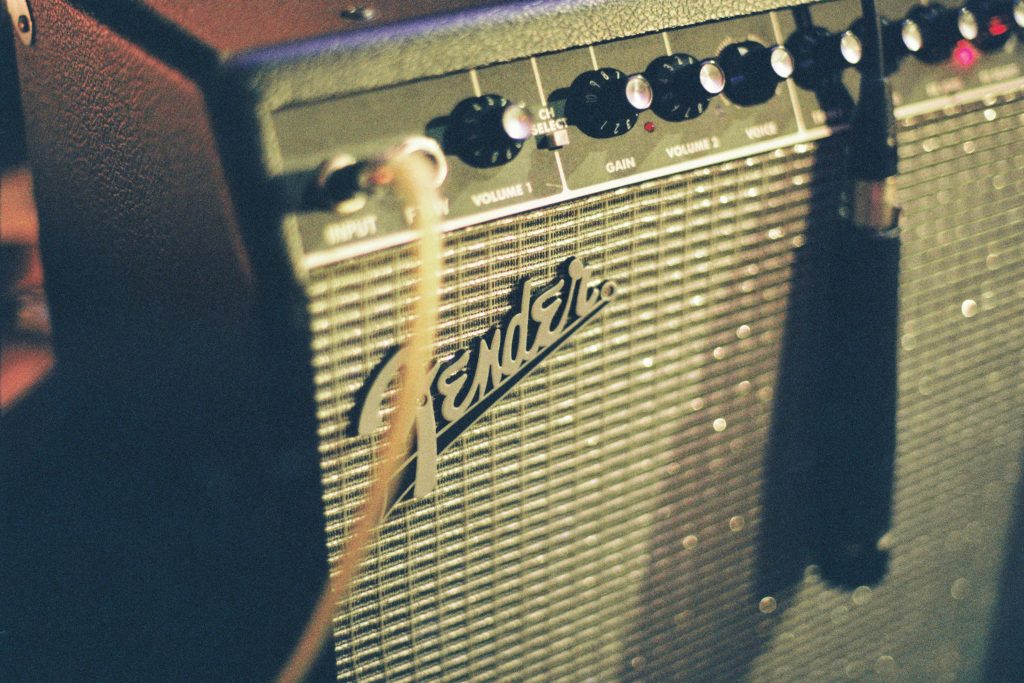
Our two offerings from Fender on our budget tube amp list each get their own sections because they are very distinctly unique amplifiers, despite living in the same price range. First on our list is the Super Champ, which, in addition to being a tube amp, also has a bit of modeling capability on board, too. That may or may not be a desirable thing to you, but I thought it deserved a spot on this list because leaving the modeling channel aside and just using the clean channel, you can actually achieve some great, classic Fender tube sounds out of this amp. As we talked about above, the combination 6V6 power tubes and the inclusion of negative feedback make the Fender tube amps much cleaner-sounding than their British counterparts. It’s for this reason that quite a few players opt for the American tube amp sound as the basis for their worship guitar tone. They offer a cleaner base to build on if you want to achieve gain and tone shaping entirely through your pedalboard.
It’s also worth more than a mention that the Super Champ has a second channel, which our previous amps did not provide. This means that with a footswitch, you could have access to two wildly different base sounds, both obviously stackable with effects, outside or inside the amp, to provide you with even more tonal combinations than you could manage with either of the two Vox options we looked at a few moments ago. Further, this second channel includes 16 different amp models on board, many of which are other classic Fender amps that are way outside our price range. If you’re looking for an amp that has that classic clean tube driven sound but still gives you some pretty serious flexibility, this might be the amp for you. Click the link below to read more about the Fender Super Champ X2
The Fender Bassbreaker
What the Super Champ has in bells and whistles, the Bassbreaker has in beautiful simplicity. What’s interesting, and no doubt part of the namesake, about the Bassbreaker series of amps is that it breaks the now-standard Fender paradigms of sparkling cleans with lots of headroom before breakup. These amps are powered by EL84 tubes (Yup, the same kind that power the classic Vox amps), as well as a switchable top boost, with the added benefit of a 3-band, rather than 2-band, EQ section. This provides you with a ton of versatility for your base sound, beautiful and warm tube breakup. The offering that fits in our budget is the Bassbreaker 007, which happens to be my go-to amp in my personal rig at church. It can be nice and sparkly when it needs to, but that 7 watts combined with the EL84 tube really allow it to go into a nice breakup that plays very well with my pedalboard.
Like all the other amps on this list, it’s small, relatively lightweight, and it won’t make your church sound engineer upset when you want to go into some nice gain-y goodness. Another great thing about this amp that I personally don’t use but a lot of other players do, is the footswitchable option for the top boost. In other words, you can get a normal and lead tone out of this little amp without having to run one of those extra boost pedals on your board. It should also be noted that this amp is capable of some pretty awesome higher gain sounds too, which, although not very desirable in the realm of contemporary worship these days, is still way cool. And if you happen to play more than one genre as many guitarists do, that might be an awesome bonus for you. Check out the link below to learn more about the Fender Bassbreaker 007.
Amp Modelers
Now we’re going to leave analog-land for a bit and check out two amp modelers that fit neatly into our under-$500 budget, that will also fit just as neatly onto a pedalboard. The first one, if you’ve been paying attention to the buzz about it, the Strymon Iridium really needs no introduction. It’s an amp modeler and cab IR (impulse response) modeler, and the reproductions of the three amps it emulates are quite spot-on. The three models included are Round, based on the Fender Deluxe Reverb; Chime, based on the Vox AC30; and Punch, which is based on a Marshall Plexi. In addition to the three onboard amp models, it also has three cabinet IRs built in, which you can also pre-load with your own, or artists’, settings.
One thing that is a huge advantage the Iridium has over some of its competitors that come in at even higher price points is ease of use. It’s possible to get a great-sounding tone out of this pedal in a way that’s similar to making adjustments on an analog amp, and I think that’s a fantastic benefit. One of the big deterrents that keeps many players away from going the modeling route with their guitar rigs is just the ridiculously steep learning curves a lot of the options out there have. With the Iridium, you power the pedal on, flip some switches to the desired model and cab IR, and adjust the familiarly labeled knobs to taste. Also, if you know Strymon at all, you know that their effects pedals are world-class, and it’s more likely than not you’ve seen their stomp boxes on more than one worship guitarist’s pedalboard, mine included. It’s safe to say this thing plays very nicely with other pedals, so if you’re looking at going without a physical amplifier but don’t want to ditch the idea of having analog or physical pedals, the Iridium might be just the right solution for you. Check out more details about the Strymon Iridium below.
A less expensive option in the pedal-platform modeling world exists in Joyo’s Preamp House. For just under $200, you get a modeler that sports tones based on classic amps from both sides of the Atlantic, including the Fender Deluxe Reverb, the Marshall JCM900, and the Vox AC30. I do want to point out that to my ears, the AC30 sound was a little lacking from what I could tell. Vox-style amps are actually where I have most of my experience in the amplifier world, so I can’t speak quite as well to the faithfulness of some the other models in this pedal, but the AC30 model just sounded noticeably off to me. Just something to consider there. Overall, the sounds are pretty good, but they definitely don’t sound as polished and pristine as the Strymon to my ears. I’ll let your ears do the judging though, definitely listen around for demos between the two, and I think you’ll hear what I mean.
Let’s talk about a few of the features: the pedal has two onboard footswitches to which you can store two presets for each amp model, which is super handy. The cab IR is also switchable, so in the event you wanted to still use the power section of an amplifier, you could turn the cab simulation off and run it that way. That’s pretty cool. There is also an XLR output as well, so you can run balanced out, which is nice if you have a long run to get to your mains wherever you’re playing. It also has a 3.5 mm headphone output on board, so you could even use this to practice if you wanted, so it might be a cool piece to pick up not even necessarily for your rig, but for playing at home if volume is ever an issue for you. One other downside on this pedal in comparison to the Iridium though, is that it doesn’t have any options for stereo output. So if running in stereo is important to you, you might not want to consider this. Overall though, the Preamp House is a great little box for the amount it costs, and would be a great lower-cost alternative if you really need to ball on a budget. However, if you’ve got the patience and don’t need to scratch that new-gear itch right away as you’re shopping, I would urge you to save up for the Iridium if you want a quality modeling experience. I think the extra couple hundred bucks is worth the wait. To read more about the Joyo Preamp House, click the link below
How to Decide What’s Right for Your Worship Rig
I sincerely hope the info in this article has helped give you some background on the amplifier options that are out there for your worship guitar rig. Even if you were familiar with everything on this list, I hope you’ve learned something new during your read!
At the end of the day the best way to decide what you need is going to be different on an individual basis, and depends on your goals, and your live sound situation. Now though, hopefully you know where each of these options excels and that will help guide your decisions. If you want to get some great driven breakup, go for the classic Vox AC amp like the AC4C1 or AC10C1, or maybe consider that Fender Bassbreaker. If you want a super clean and pristine base for an arsenal of pedals, you might try the Fender Super Champ. And if you don’t want to lug an amp, or don’t have the physical space to accommodate one, you might look at getting the Strymon Iridium or Joyo Preamp House.
As always, if you have any questions, thoughts, opinions, concerns, or just want to say hi, drop a comment below and we’ll chat! Thanks so much for reading and have a blessed day!


